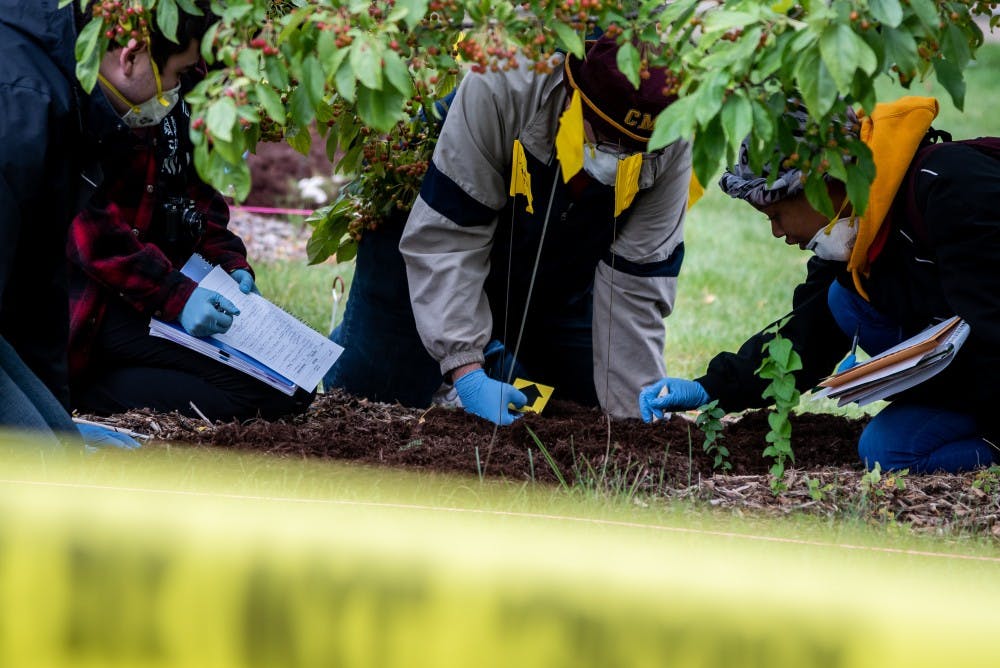Students unearth fake human remains during mock crime scene
Yellow barricade tape lined the south lawn outside of Anspach Hall Oct. 4 where human remains were unearthed by Central Michigan University students wearing blue rubber gloves, shoe covers and dust masks. The amateur investigators were given about three hours to establish a perimeter, survey and document the scenes.
The mock crime scenes were part of a midterm exam for 32 students in Anthropology 342: Principles of Forensic Anthropology. "Search and recovery lab,” materials were buried in mulch for students to find. Students were expected to follow proper protocol as if the evidence would be presented in a court of law.
Sociology, anthropology and social work faculty member Catherine Willermet said students were graded individually by their mapping, photographs, record keeping and excavating and collectively by the eight groups' effort and technique. After the exercise, students also wrote a conclusion about their findings.
Marshall senior Jacob Lozon, an anthropology minor, said, for him, the most interesting and nerve-racking part of the hands-on lab is staying within proper protocol.
“This is such a different experience than sitting at a desk and looking through documents,” Lozon said. “For what this class teaches you, there almost has to be something hands-on.”
Willermet began using mock crime scenes in 2007 at the University of Louisiana Monroe. She said it is important for students to not only learn forensics but also how to apply the skills they have learned in a real-world scenario.
“This is a really active exam that makes students problem-solve and show critical thinking,” Willermet said. “It’s fun to observe. Every student, at some point, gets frustrated during this lab and learns to work through it.”
Midland senior and anthropology major Eli Cross is interested in archaeology but said forensics has given him applicable skills.
About two-thirds of students in Willermet’s class are majors outside anthropology. Willermet thinks forensics is appealing to students because of the puzzles they are given to solve. However, she admits the course counts as a science class also.
Officer Chris Pryor of the Central Michigan University Police Department visited the crime scenes. The campus police officer had a similar experience while attending Lake Superior State University, he said.
“It is great for students to realize that a crime scene has a lot to work through. It’s not going to be solved in an hour like on TV,” Pryor said. “This is real evidence technician work. If CMUPD needed more evidence or detail, technicians would come in and do a lot of the same things as these students.”




